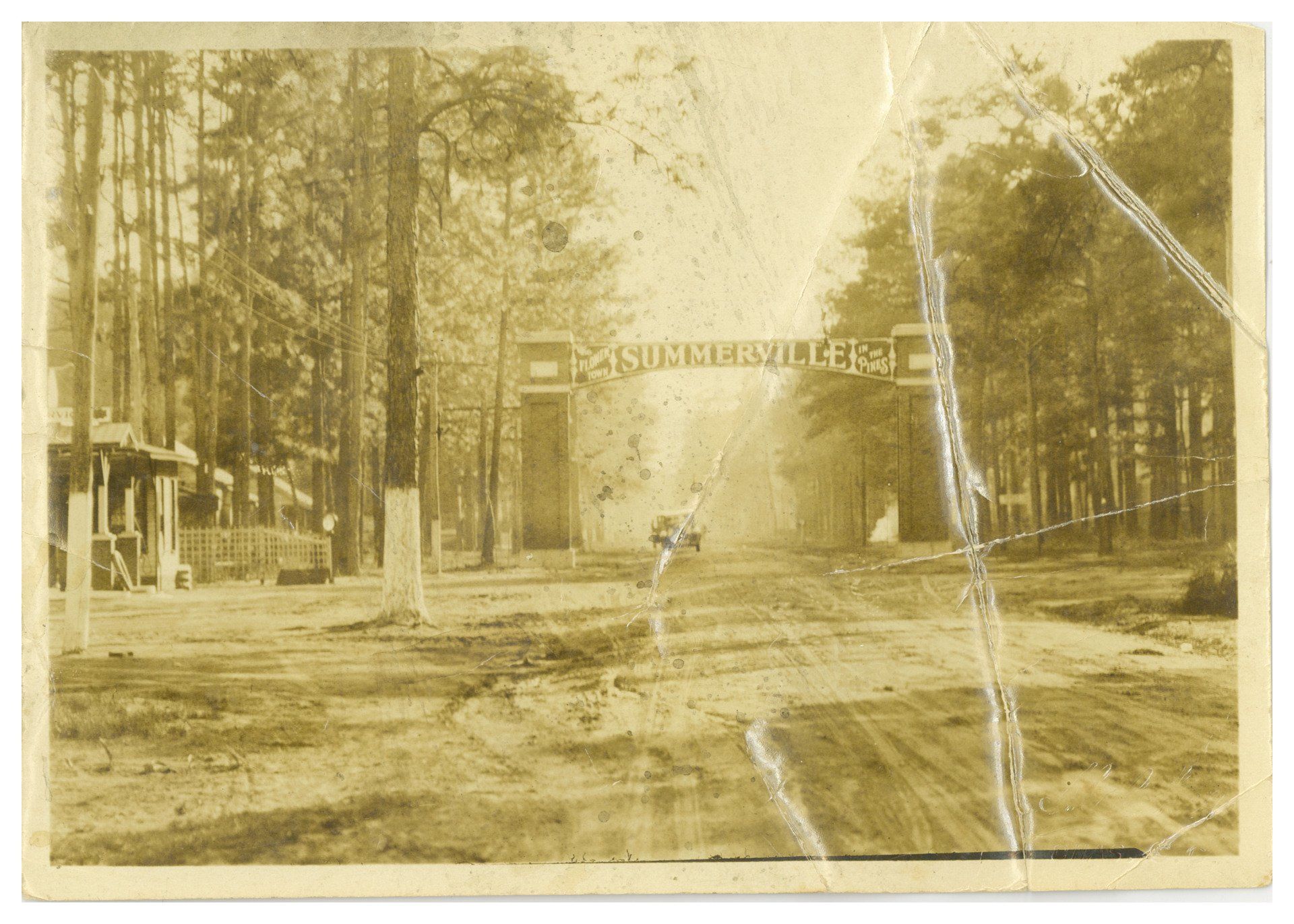
#10The Summerville
Arch
Corner of Doty and Main Street
Summerville Arch Sign
The large arching sign on Hutchinson Square is a reminder of the natural beauty of the town and a statement of appreciation for the pines of Summerville. It recalls moments of our history worth memorializing. When the town was incorporated in 1847, one of the reasons was for the citizens to have the authority to demand that the railroad company cease cutting down the pine trees which were thought to hold health benefits. This inspired the town motto: “Let the pines be sacred.” In 1933, the term “Flowertown in the Pines” was adopted. In 1941, a large wooden arch spanned the North Main Street town entrance with a welcoming message: “Summerville – the Flowertown in the Pines.” Those leaving town to the north would read on the back side of the sign, the town motto: “Let the pine be sacred.”
Hutchinson Square
• Hutchinson Square was named after Phillip Henry Hutchinson, the first Intendent of Summerville. Born 1839, died 1910.
• Hutchinson served in the Confederacy throughout the Civil War. He and his wife, Susan Freer, had 14 children. Their son, George was postmaster of Summerville from 1915-1924 when the post office was in the OC Sires building on the Square.
Summerville Arch Sign
• The large arching sign on Hutchinson Square is a reminder of the natural beauty of the town and a statement of appreciation for the pines of Summerville. It recalls moments of our history worth memorializing.
• When the town was incorporated in 1847, one of the reasons was for the citizens to have the authority to demand that the railroad company cease cutting down the pine trees which were thought to hold health benefits. This inspired the town motto: “Let the pines be sacred.”
• At about the same time, azalea plants from Japan were first introduced to the Lowcountry at Magnolia Plantation on the Ashley River. This plantation was owned by the Draytons, longtime summer residents of Summerville.
• By the 1920s, visitors to Summerville were increasingly using highways, US 17A and SC 78. These freshly improved roads intersected at the modern Dorchester County Building (old Dorchester County Hospital). This intersection of North Main St. at 5th St. became a prominent entrance to the town during the 1930s.
• In 1933, the ravine that had divided the original village area from New Summerville was fully drained, but it was undeveloped and essentially void of structures. In those days of the Great Depression, Charleston was just beginning to become a major player in the tourist trade.
• Town planners had noticed that azalea gardens at Middleton, Magnolia and Cypress were drawing tourist dollars beyond Charleston and saw an opportunity for Summerville. The development of modern Azalea Park with thousands of deliberately planted azalea bushes was the result.
• In the context of presenting the new park to the public, the term “Flowertown in the Pines” was proposed by a local schoolgirl, Virginia Bailey. She was the winner of a contest in 1933 to capture a memorable description of Summerville. This nickname was first used to promote Azalea Park to tourists visiting the plantations.
• In 1941, a large wooden arch spanned the North Main Street town entrance. (Situated at today's intersection of Highway 78 and North Main. A small grove of pine trees is on the site of the western post of the arch - the NE corner of the block where the Dorchester County Building is situated.) The welcoming message: “Summerville – the Flowertown in the Pines.” was there to greet visitors and those leaving town to the north would read on the back side of the sign, the town motto: “Let the pine be sacred.”
• A parade to celebrate the erection of this sign was a big event at the time.



